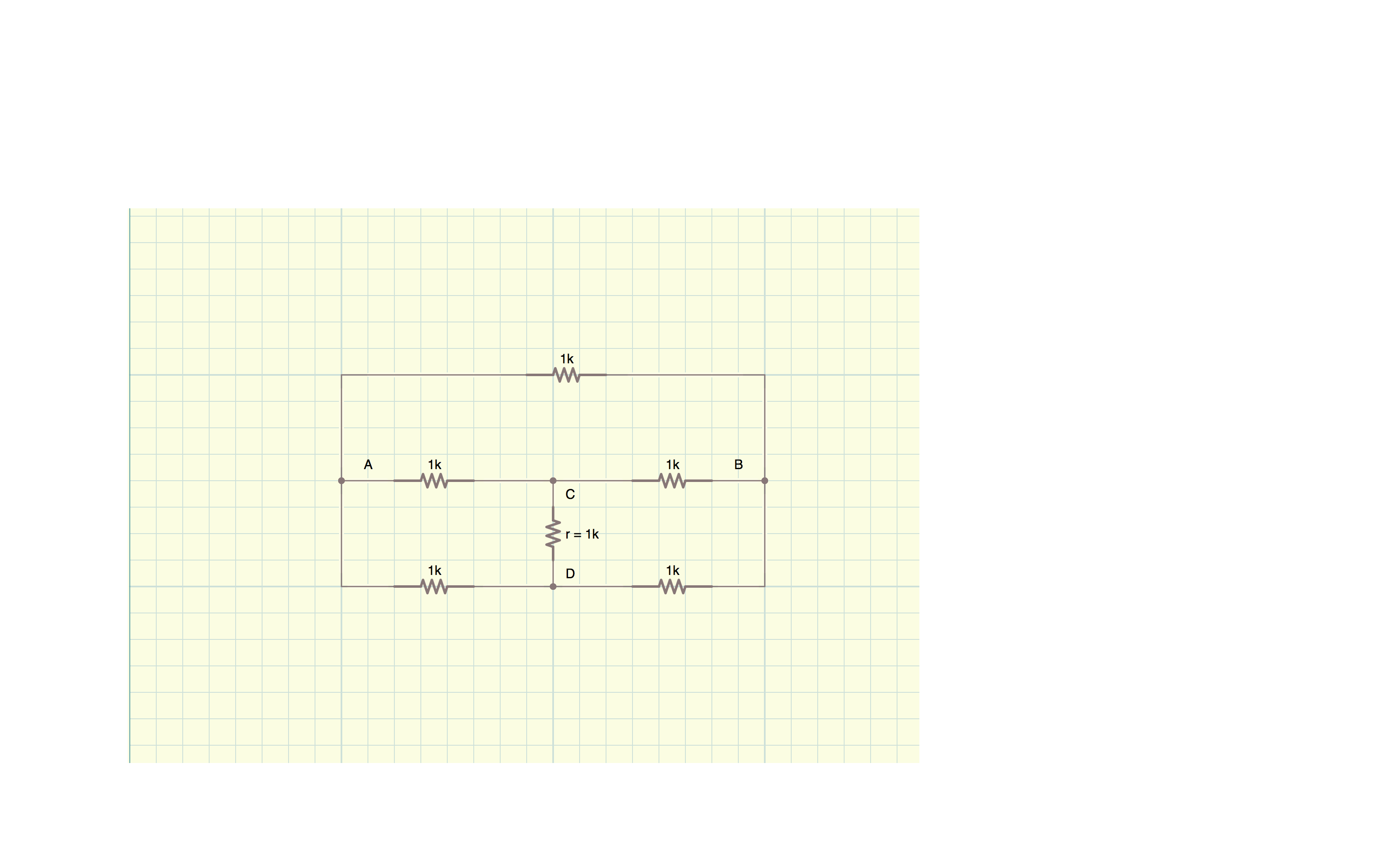The original network is an square network with two diagonals as you can see here there is no intersection between the diagonals.: 
The question is what is the equivalent resistance between points A and C as wel as A and B ?
I rearranged the network to the equivalent network here under (all the resistances which labeled as '1k' below is actually 'R' in original network):

now i see the bridge of Wheatstone so the equivalent resistance is $$\frac{R}{2}$$. The bridge is in equilibrium and the current in 'r' is zero. Now i want to evaluate the equivalent resistance between the points A and C, if i take exact the same rearrangement and suppose that there is no current in resistance 'r' i would find an expression independent of 'r', but that's clearly false and i wonder why ?
The correct answer is $$\frac{R(3R+(5r)}{8(R+r)}$$. I find it by using the general methode.
